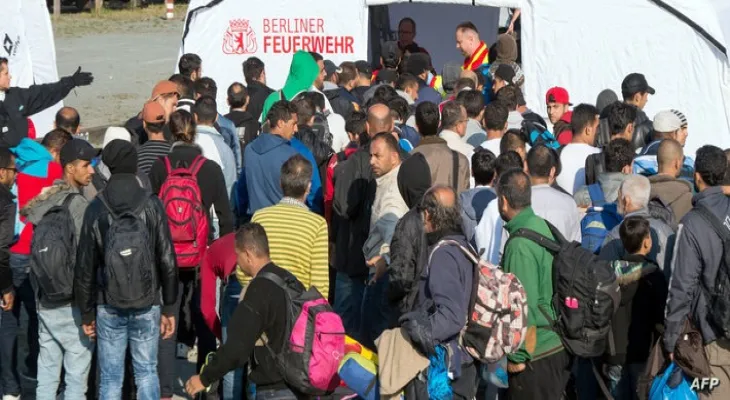Search here
Newspaper
Search here

Arab Canada News
News

Published: July 5, 2023
A report by the European Union Agency for Asylum revealed that European countries received 966,000 asylum applications last year, an increase of about half compared to 2021, marking the highest number in six years.
The agency's European report issued on Tuesday indicates that Syrians were at the top of the list of nationalities submitting asylum applications in European countries, with 138,000 applications, followed by Afghans with 132,000, then Turks with 58,000, and citizens of Venezuela and Colombia with 51,000 and 43,000 applications respectively.
The same source stated that about 70 percent of these applications were submitted in only five European countries; led by Germany with 244,000 applications, France with 156,000, then Spain with 118,000 applications, Austria with 109,000, and Italy fifth with 84,000 applications.
Males represent 71 percent of asylum applicants in European countries, according to the report.
The expanded European Union countries (EU states plus Iceland, Liechtenstein, Norway, and Switzerland who are part of the Schengen area) dealt with 646,000 applications submitted, the highest number since 2017.
Positive decisions were issued for 252,000 applications, with an acceptance rate reaching 39 percent, which is also the highest rate in six years, and decisions varied between granting 59 percent of accepted applicants "refugee status," and 41 percent "temporary/secondary protection" status.
Applicants originating from Syria, Ukraine, Eritrea, and Ukraine received the highest acceptance rates in 2022, according to the same source.
However, despite the increased speed in decision-making in 2022 due to the large increase in applications, the number of pending decisions at the European institutions concerned with asylum rose to 899,000 applications.
The report indicates that the expanded EU countries faced exceptional numbers of people in need of protection last year, as a result of the sharp increase in asylum applications submitted in Europe, alongside the forced displacement of millions from Ukraine following the Russian invasion.
In light of these developments, the European Union and its member states mobilized an "unprecedented amount of resources to meet the increasing protection needs," according to the study.
Global Developments
At the global level, the report indicates that crises, including new and ongoing conflicts, climate shocks, geopolitical instability, violence, and persecution, led millions of people to flee their homes in 2022.
The Russian invasion of Ukraine caused one of the fastest and largest forced displacement crises since World War II, according to the report.
Displacement cases continued or increased worldwide, pushing the global number of displaced people to historic levels in 2022, reaching nearly 103 million people according to estimates by the UN High Commissioner for Refugees.
The same source emphasized that this situation carried "serious consequences" for civilian populations in Afghanistan, Burkina Faso, the Central African Republic, the Democratic Republic of Congo, Ethiopia, Mozambique, Myanmar, Nicaragua, the Northern Triangle of Central America (Guatemala, El Salvador, Honduras), the Sahel region, Syria, and Venezuela.
The European report pointed out that the EU's external borders are under increasing pressure, as the number of arrivals sharply rose for the second consecutive year, with 330,000 cases of irregular crossings by migrants and asylum seekers recorded.
Preliminary data showed a record increase exceeding 64 percent compared to 2021, noting that these numbers did not include displaced persons from Ukraine, estimated at 4 million who received special temporary protection status.
Comments